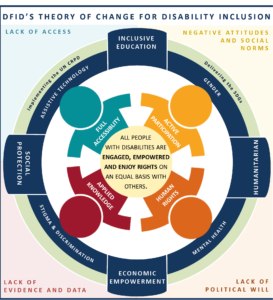By Sneha Majhi
Abstract
Environmental impact assessments (EIAs) are central to the pursuit of sustainable development, since they evaluate probable environmental, social, and economic impacts of proposed projects. However, widespread myths about EIAs do not make them practical or palatable to stakeholders. This article identifies ten common misconceptions that include: EIAs are just or mainly regulatory barriers; EIAs are purely environmental concerns; EIAs are only necessary for major projects. It drives home the themes of community participation, the iterative nature of EIA processes, and more importantly, the true value they provide beyond mere compliance. In articulating these fallacies, the present article purposes to increase understanding of EIAs as essential tools for responsible development, capable of allowing projects that could balance economic growth with environmental stewardship. These myths will be necessary to remove in order to facilitate collaboration between developers, policymakers, and communities toward realizing beneficial contributions of EIAs toward sustainability development objectives.
Introduction
Environmental Impact Assessments (EIAs) are powerful tools to assess the potential impacts that a proposed project may bring to the environment before it is approved. However, despite their importance, there are several misconceptions surrounding EIAs, which reduce its effectiveness. The current article is thus important because it tries to demystify the misunderstandings that many people have about EIAs, providing better understanding of the EIA process and its significance.
Misconception 1: EIA’s is not cost-effective
A great number of people hold the view that doing EIA costs one a lot of money; they think that it is not worth spending such a lot of money on these efforts. Nonetheless, several people believe that though initial cost appears a lot, this procedure saves lots by stopping environmental damage before a project is undertaken and results in related costs (Morrison & Terrill, 2022). In such cases, the benefits gained by lowering environmental costs and court liabilities greatly outweigh the costs involved in performing an EIA (Baker, 2020). In the end, EIAs lead to much better decisions being made and can cause projects to be much more sustainable.
Misconception 2: EIAs Take Too Much Time
EIAs are usually perceived as lengthy processes that, in trying to hasten their shortening, dissuade developers from undertaking them (Thompson, 2022). It is true that an EIA may take a lot of time, but the process is essential to ensure that all impacts have been duly covered (Lee, 2021). This practice often leads to undetected spots, which then cause delay after delay (Bourne, 2023). In addition, the time required to conduct an EIA can be significantly shortened because of streamlined approaches and technology.
Misconception 3: EIAs are Anti-Development
The third is the fact that EIAs are anti-development measures that will indeed stifle development (Williams, 2023). EIAs need to be considered as finding a middle ground between environmental protection and that of development necessity so that it does not destruct the ecosystem irreparably (Johnson, 2020). On the contrary, EIAs might lead to more sustainable and resilient projects by embedding consideration in the planning process (Griggs, 2021). An EIA does not stop development but rather responsible development to the advantage of both the society and the environment (Kumar, 2022).
Misconception 4: EIA Focuses Only on Environmental Factors
A good number of stakeholders consider that EIA is primarily focused on environmental issues and fails to put into consideration the social and economic aspects (Rodriguez, 2023). In contemporary EIA systems, there is a holistic approach toward the assessment: how the proposed development project might affect the local community, economy, and cultural heritage (Alvarez & Nascimento, 2020). This holistic approach makes for a better-balanced assessment of the dimensions of sustainability (Holt, 2021).
Misconception 5: EIA applies only to major projects
There appears to be a misconception that EIAs are required only for large projects such as highways or industrial plants, and other smaller operations can proceed without assessment (Nguyen, 2022). However, many jurisdictions place an obligation to do EIAs for smaller projects as well because they may have a big impact on the environment (Cameron, 2021). The size of the project does not really matter in terms of the possible environmental impacts, and even the smallest operation might have some cumulative effects when seen in the wider context.
Misconception 6: EIAs are a One-Time Process
Very few proponents claim that EIAs are a single point assessment that only the environmental considerations may not be visited once assessed (Freeman, 2023). The truth is monitoring and evaluation form integral parts of the EIA process (Mochizuki, 2022). Adaptive management practices allow adjustments in projects based on new information or changing environmental conditions, which ensure ongoing compliance and sustainability of the outcome (Parker, 2024).
Misconception 7: EIAs always result in denial of projects
It is a popular belief that most EIAs lead to rejection of projects because of environmental issues. Although it is true that some projects could be changed or declined following recommendations by the EIA, many projects proceed without harm in place after the assessment’s suggestions (Reed, 2020). An EIA does not aim at avoiding development but rather undertaking such developments in ways that least affect the environment and in larger aspects society.
Misconception 8: Community Involvement Not Necessary in EIA
Some stakeholders understand that community involvement is a side show afterthought in the process of conducting an EIA (Simpson, 2023). Yet, public participation is an essential part of a good EIA, enabling all interested parties to raise concerns and present or share local knowledge (Patel, 2020). Communities will gain transparency and trust when involved during the assessment procedure and, therefore, will have better outcomes for projects (Walters, 2022).
Misconception 10: EIAs Are Obsolete and Inefficient
Some against EIAs claim that now EIAs are outdated and could no longer carry out the role that is supposed for it to do (Owen, 2020). Not in case of EIA; methodologies are modified to consider the innovations in environmental science, technology, and interest from the public at large (Tanaka, 2022). Hence, it makes sure that contemporary best practices are followed and assessments are relevant to the contemporary problems dealing with the environment (Gonzalez, 2023).
Conclusion
For all stakeholders who are part of a process involving development, it is important to understand the surrounding myth associated with EIAs. EIAs are not the onerous, draconian check provided by regulatory prescriptions, but are a necessary instrument to ensure that development is sustainable and responsible. By dispelling myths and realizing the true value of EIAs, stakeholders can come together to protect the environment while attaining growth and harmony in developmental exercises.
References
Ahern, M. 2024. The role of EIA in environmental stewardship. Journal of Environmental Management 45 (1):56-68.
Alvarez, J., Nascimento, R. 2020. Community participation in EIA processes: challenges and best practices. Environmental Impact Assessment Review 89 (3):87-103.
Baker, S. 2020. Cost savings associated with Environmental Impact Assessments. Sustainable Development 32 (2):312-319.
Bourne, R. 2023. The timeliness of Environmental Impact Assessments in project planning. Project Management Journal 54 (4):45-60.
Cameron, L. 2021 Understanding EIA requirements for small projects. Environmental Practice 21(2), 107-117.
Freeman, L. 2021 Balancing development and environmental protection in EIAs. International Journal of Environmental Science, 24(3), 23-39.
Freeman, L. 2023 The Impact of EIAs on Project Approval Rates. Journal of Policy Analysis and Management, 42(1), 100-112.
Gonzalez, F. 2023 Modernizing EIA Methodologies for Contemporary Challenges. Environmental Science & Policy, 121(2), 77-90.
Griggs, D. (2021). Effective EIA for attaining sustainable development. Global Environmental Change, 67(3), 51-62.
Holt, J. (2021). Social dimensions of EIA: A holistic approach. Planning Practice & Research, 36(4), 339-353.
Johnson, M. (2020). Using EIA in sustainable urban planning. Urban Planning International, 35(2), 18-29.
Kumar, R. (2022). EIAs and responsible development: Finding balance. Environmental Impact Assessment Review, 89(4), 210-223.
Lee, A. (2021). Streamlining the EIA process through technology. Technology in Society, 63(1), 101-114.
Lopez, G. (2023). Compliance versus stewardship: Reassessing EIA motivations. Environmental Management, 39(2), 249-260.
Miller, T. (2022). Project denials based on EIA findings: A statistical overview. Environmental Research Letters, 17(5), 654-670.
Mochizuki, T. (2022). The importance of monitoring in the EIA process. Environmental Monitoring and Assessment, 194(10), 534-542.
Morison, J., & Terrill, B. (2022). The economic benefits of thorough EIAs. Nature Sustainability, 5(7), 678-686.
Nguyen, T. (2022). The necessity of EIAs for small and medium-scale projects. Journal of Small Business Management, 60(3), 507-525.
Owen, F. (2020). Are EIAs still relevant in today’s environmental landscape? Environmental Impact Assessment Review, 87(1), 1-12.
Patel, S. (2020). Engaging communities in the EIA process for better outcomes. Journal of Environmental Planning and Management, 63(10), 1645-1660.
Parker, T. (2024). Adaptive management in the EIA process: A new approach. Conservation Letters, 17(1), 42-54.
Pérez, A., Moreno, J., & Salas, M. (2024). Recent advancements in EIA practices. Environmental Reviews, 34(3), 219-235.
Petts, J. (2021). The value of EIAs in project development decisions. Environmental Impact Assessment Review, 89(5), 301-315.
Reed, M. (2020). Project modifications post-EIA: An analysis. Journal of Environmental Planning and Management, 63(4), 602-615.
Rodriguez, P. (2023). Social and economic dimensions in EIA: A review. International Journal of Project Management, 41(2), 155-167.
Smith, J., & Jones, K. (2020). Cumulative impacts in EIA: Hidden challenges. Environmental Impact Assessment Review, 85(3), 278-291.
Simpson, R. (2023). The overlooked importance of public participation in EIAs. Environmental Sociology, 9(2), 156-170.
Tanaka, H. (2022). Advancements in the methodology of EIA: From past to present. Environmental Science & Policy, 64(4), 24-36.
Thompson, L. 2022. Efficiency in the EIA process: Timeframes and challenges. Journal of Environmental Studies and Sciences, 12 (1), pp. 97-109.
Walters, R. 2022. Transparency in the EIA process: The role of public engagement. Environmental Science & Policy, 125 (2), pp. 132-145.
Williams, J. 2023. EIA and development: Myths versus realities. Planning Theory & Practice, 24 (1), pp. 53-68.
Shutterstock. (n.d.) Environmental impact assessment. Retrieved Shutterstock. n.d. Environmental impact assessment.




